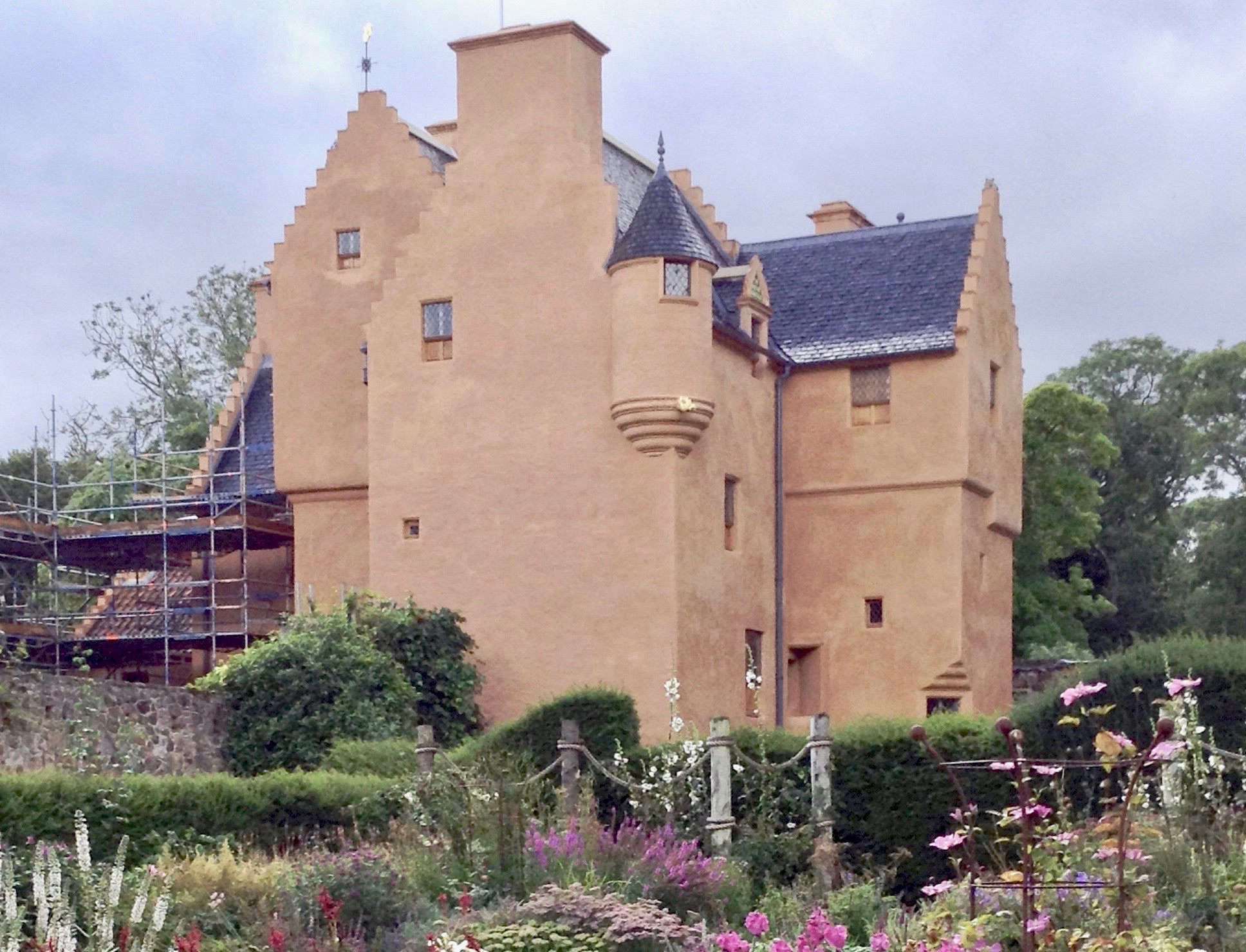Garden Remodel: A Landscape in Progress on the Coast of Scotland - Gardenista

In a mild corner of Fife on the east coast of Scotland sits a small estate named Wormistoune.
Photography by Christin Geall.
Head gardener Katherine Taylor makes notes about what to add and subtract every year, constantly revising and refining the plantings. With such a long and rich history to draw from, the McCallums have chosen to pursue an 18th-century narrative to guide their work.
A box parterre styled in the shape of interlocking Scotch thistles is interplanted with cosmos in summer. A number of serpents appear throughout the garden.
A seating area in the potager at Wormistoune.
Queen Anne’s lace and purple verbena mingle in the cutting garden.
Wormistoune’s L-plan tower house dates from the 12th century but has been restored to its 17th-century appearance.
The moongate at Wormistoune, draped in Rosa banksiae ‘Lutea’. Two of the most impressive features of the garden are the pavilions set in the east corners of the walled garden.
Two pavilions sit at either end of the walled garden, separated by a rill and two ponds.
Outside the pavilions, traditional flagstone paving is enlivened by an arc of cobblestones and creeping thyme. Head gardener Taylor mixes perennials with occasional grasses but to loosen her borders, she also incorporates big bloomers such as peonies, dahlias, and roses.
Ammi and Verbena mingle in a cutting garden at Wormistoune. A nuttery and several hundred trees have recently been planted to secure the future of the woodlands.
Late-season Sanguisorbas outside the stable block at Wormistoune.
October asters outside the stable block. Wormistoune is open on Tuesday afternoons in the summer through Scotland’s Gardens Scheme.